On December 10, 2020, when I sat in front of the computer and opened Cyberpunk 2077, I could not restrain the restlessness and excitement in my heart. When my cyber body traveled through the three-dimensional and complex Night City, I never imagined that I would come to Wan Chai District on Hong Kong Island half a year later and find a bridge and ground structure similar to the Night City. Coming to Hong Kong, as the holy land of cyberpunk subculture, it folds and unfolds its body that is difficult to contain growth in a narrow space. Above its body, there is a wealth of glittering glass and the lines under its body. It is the sigh of despair in the eyes of the narrow and muddy houses and people who can’t see the sky.
I followed the footsteps of the movie “Ghost in the Shell” and broke into this blurred and crowded city.
1. Cyberpunk and Hong Kong
In the interview with Mamoru Oshii, the author of Ghost in the Shell, we can easily understand that New Port City, where the story of Ghost in the Shell takes place, is based in Hong Kong.
Hong Kong can become a source of material, and in the past few decades, it has continuously satisfied the imagination of the sci-fi community to become such a city.
Since the post-war period, Hong Kong has absorbed refugees and laborers from the mainland, and the period when the economy began to take off has also created a unique real estate culture in Hong Kong. 75.6% of Hong Kong’s area is undeveloped according to the special administrative region’s planning department (Daniel McCoy, 2021), and the poor can only live in small housing enterprises with more than ten square meters. In the gap between high-rise buildings, the layers of crowded and dilapidated buildings are in stark contrast to the rapid modernization in the buildings. Therefore, in the wave of Japanese science fiction in the last century, Hong Kong was regarded as a very typical model of an Asian city, which perfectly reflects the spiritual state of rapid development in Asia. “Cowboy Bebop”, “Ghost in the Shell” and other famous works all use Hong Kong as the filming location.
The decadence, anarchy, and dreamy high-tech surrealism of Ghost in the Shell’s New Port City is all about Hong Kong.
1. City Walk
In his book, De Certeau (1984) likens walking in the city to a perception of the city’s subconscious projections. I set myself still on Hong Kong Island and Kowloon, looking for these urban landscapes that closely resemble Ghost in the Shell.
·Central and Wanchai
Pottinger Street

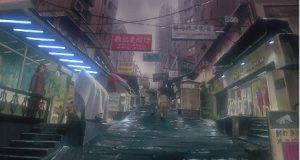
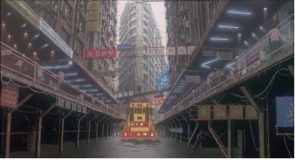


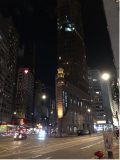
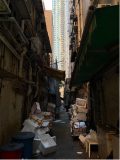
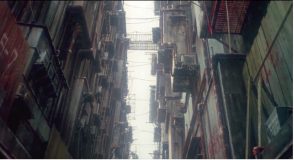
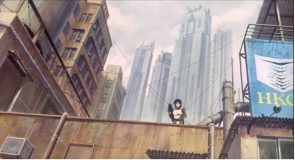

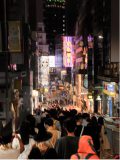
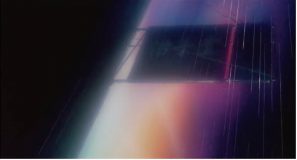
·Tsim Sha Tsui
Looking at Hong Kong Island from Tsim Sha Tsui is the building of Victoria Harbour. There is an action scene on the water in the movie, and the background is taken from this place.
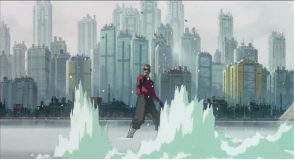
·Victoria Harbour
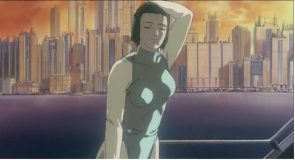

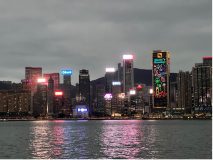
The night diving in the harbour in the film, the landscape on both sides of the strait is like Victoria Harbour.
·Mong Kok, Yau Ma Tei
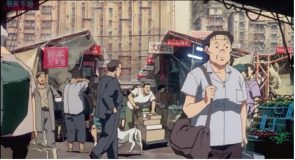
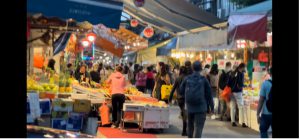
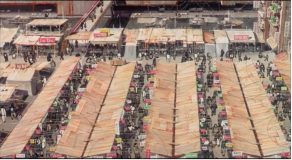
The market chase paragraph is also very similar.

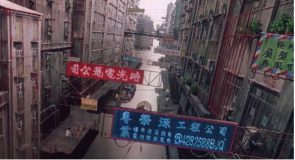
Chinese character advertising sign
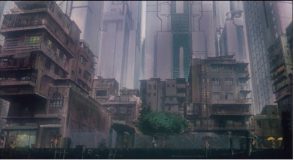
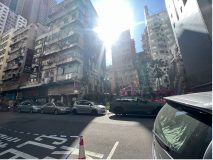
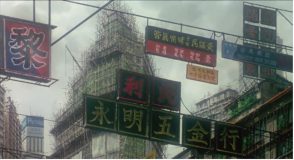
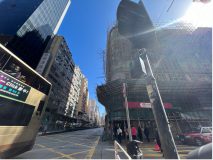
scaffolding construction
3. Cyber Narrative
Cyberpunk’s “high-tech, low (level) life” is undoubtedly implemented in the city of Hong Kong. The architectural style of the whole city is divided and ferocious, which perfectly fits the fantasy of the New Wave science fiction for the future city. Walking on the streets of Hong Kong, even in the most prosperous commercial center, the foot of the enormous steel behemoth is always dotted with groups of old-style residential areas like earth-colored waves. If Hong Kong is compared to a vast group subconscious, then this giant must be schizophrenic. The most primitive capitalism is rampant in this small harbor. The rich laugh wildly and the poor cry wildly. The city is crazy. Walking in it, you can feel the projection of the city is so indescribable and so intense and psychedelic. Hong Kong is a city with a sense of speed and a psychedelic city, where reality and spiritual world invade each other, and contradictions are constantly confronting under the skin of society. This is Hong Kong, and this is the capital of cyberpunk.
Reference:
McCoy, D.J. (2021). From Cyberpunk to Cramped Dweller: The Peculiar History of Hong Kong ‘Heterotopias’.
De Certeau, M. (1984). Spatial Stories. In The Practice of Everyday Life (pp. 115-130), translated by Steven Randall. Berkeley: University of California Press.
Appreciate your attempt to discuss the film through cyberpunk and Hong Kong, and to reflect upon the streets of the city through De Certeau’s piece on walking. Is this a description that you confirm during your fieldwork, be it an actual trip to the streets in Central or a virtual trip via the blogs/vlogs of others who describe their experiences? Here, it is unclear what is the “fieldwork” that you have conducted. Did you attempt to identify and visit physically or virtually Pottinger Street in the film to understand how the film has captured it and what was changed or manipulated to emphasize the plot narrative? If you did not conduct a field trip in person, did you do so virtually, i.e. “visit it” through other people (media reports, personal blogs, videos, etc.) who had done it? Instead of simply accepting McCoy’s “cyberpunk’s ‘high-tech, low (level) life’ is undoubtedly implemented in the city of Hong Kong,” through the fieldwork, you can reflect on the way the spaces you mentioned were used in the film and how they may or may not be possible to be utilized as such in reality (for example, how is walking in Central or Wanchai in the film similar or different with reality). Do also cite your sources fully, including de Certeau’s text that you referenced, and other sources of materials that you refer to in your essay.